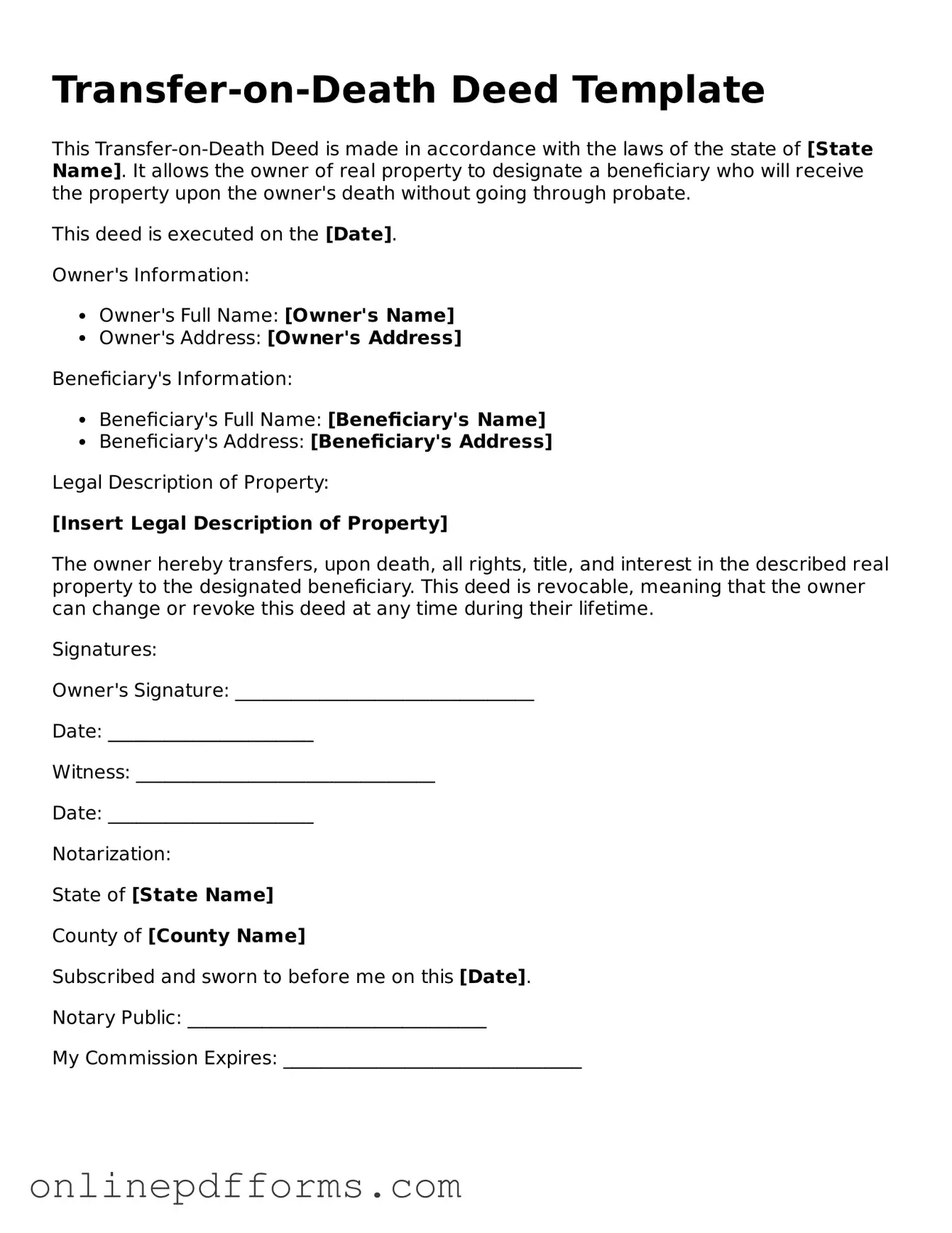Legal Transfer-on-Death Deed Form
A Transfer-on-Death Deed is a legal document that allows property owners to designate beneficiaries who will automatically receive the property upon the owner's death, bypassing probate. This form provides a straightforward way to ensure your assets are transferred according to your wishes without the complexities of traditional estate planning. To get started on securing your property for your loved ones, fill out the form by clicking the button below.
Open Transfer-on-Death Deed Editor Now
